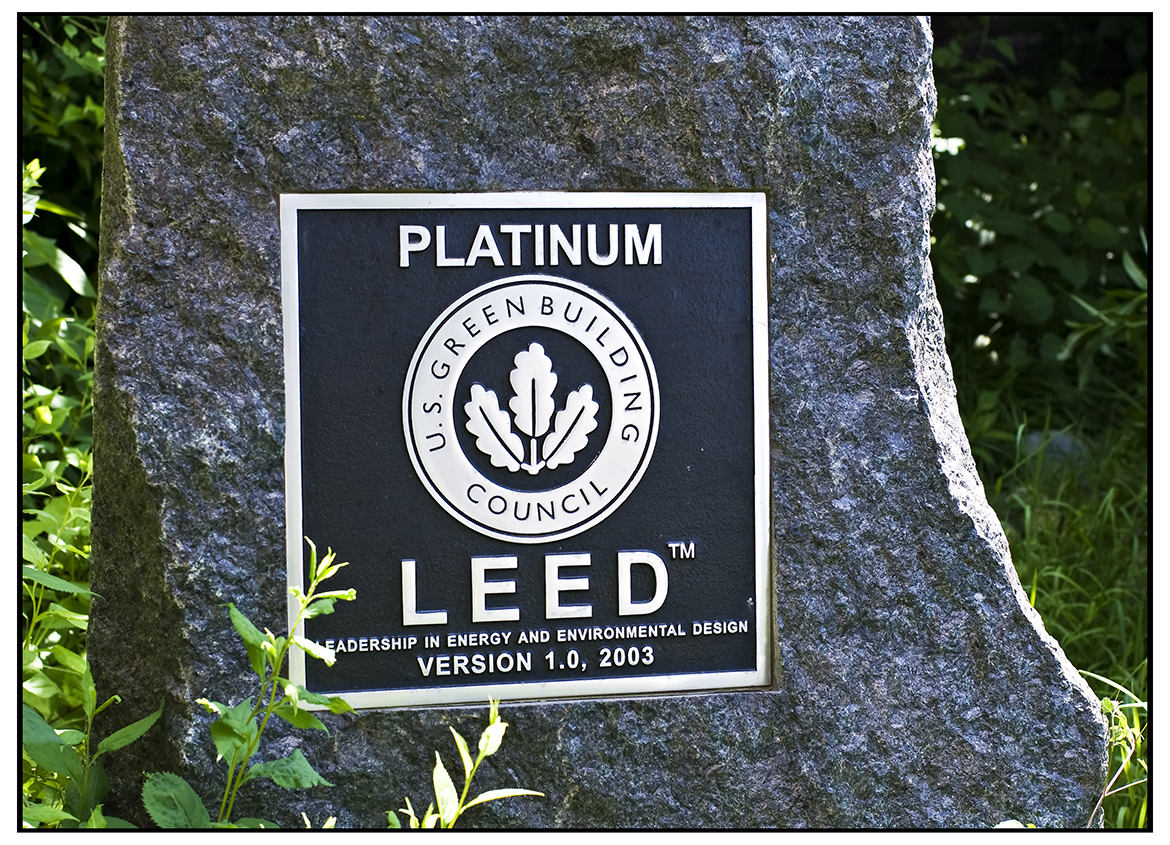Leadership in Energy and Environmental Design (LEED®)
 Developed by the U.S. Green Building Council, the Leadership in Energy and Environmental Design (LEED) Green Building Rating System™ is the nationally accepted benchmark for the design, construction, and operation of high performance green buildings. LEED promotes a whole-building approach to sustainability by recognizing performance in five key areas of human and environmental health: sustainable site development, water savings, energy efficiency, materials selection, and indoor environmental quality. The U.S. Green Building Council’s LEED (Leadership in Energy and Environmental Design) Green Building Rating System serves as a scorecard for the design, construction, and operation of green buildings. It was designed to encourage the adoption of sustainable building and development practices. Sustainable development tries to balance the needs of people, nature, and the economy.
Developed by the U.S. Green Building Council, the Leadership in Energy and Environmental Design (LEED) Green Building Rating System™ is the nationally accepted benchmark for the design, construction, and operation of high performance green buildings. LEED promotes a whole-building approach to sustainability by recognizing performance in five key areas of human and environmental health: sustainable site development, water savings, energy efficiency, materials selection, and indoor environmental quality. The U.S. Green Building Council’s LEED (Leadership in Energy and Environmental Design) Green Building Rating System serves as a scorecard for the design, construction, and operation of green buildings. It was designed to encourage the adoption of sustainable building and development practices. Sustainable development tries to balance the needs of people, nature, and the economy.
How does LEED work?
LEED has grown and evolved from a single standard for new construction to different project development and delivery processes. An entire suite of rating systems has evolved and more are on the horizon. These deal respectively with existing buildings, core and shell, schools, retail, health care, homes, and neighborhood development. In many of these, pavement plays a role in the overall rating. Certification is voluntary, although some city governments and federal agencies now specify LEED certification for buildings.
The rating system addresses six categories:
- Sustainable sites
- Water efficiency
- Energy and atmosphere
- Materials and resources
- Indoor environmental quality
- Innovation in design
Under the LEED system, asphalt pavements can earn credits in three areas: Sustainable Sites (SS), Materials and Resources (MR), and Innovation and Design Process (ID). Credits for Sustainable Sites include storm-water management. Under Materials and Resources, credit can be earned for diverting materials from landfills, incorporating recycled materials, and using regionally produced materials. It is possible that credits for Innovation and Design Process may be earned for such processes as warm-mix asphalt and high-RAP (reclaimed asphalt pavement) mixes.
Earning LEED® Certification
To earn certification a building project must meet certain prerequisites and performance benchmarks (“credits”) within each category. Projects are awarded Certified, Silver, Gold, or Platinum certification depending on the number of credits they achieve.
Pavement type selection (concrete vs. asphalt), on its own, directly contributes to only a few LEED credits. Credits can be earned in these ways:
- Porous asphalt systems earn credits for stormwater management.
- The ability to recycle asphalt pavement and the use of asphalt with high percentages of RAP (reclaimed asphalt pavement) make asphalt eligible for credits under the materials and resources heading.
- Light-colored asphalt pavements earn credits for urban heat island mitigation.
- The fact that asphalt pavement material is produced locally can earn credits for materials and resources.
- Warm-mix asphalt offers several advantages which support sustainable development.
When all these factors are considered, asphalt pavements can contribute more LEED credits than other pavement types.
For more information on asphalt and LEEDs, visit the National Asphalt Pavement Association website at:
http://www.asphaltpavement.org/index.php?option=com_content&view=article&id=28&Itemid=72
